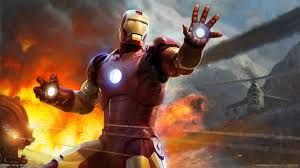Video Game Wallpapers Hd Biography
Source (google.com.pk)
A video game is an electronic game that involves human interaction with a user interface to generate visual feedback on a video device. The word video in video game traditionally referred to a raster display device, but it now implies any type of display device that can produce two or three dimensional images. The electronic systems used to play video games are known as platforms; examples of these are personal computers and video game consoles. These platforms range from large mainframe computers to small handheld devices. Specialized video games such as arcade games, while previously common, have gradually declined in use. Video games have gone on to become an art form and industry.
The input device primarily used to manipulate video games is called a game controller, and varies across platforms. For example, a controller might consist of only a button and a joystick, while another may feature a dozen buttons and one or more joysticks. Early personal computer games often needed a keyboard for gameplay, or more commonly, required the user to buy a separate joystick with at least one button. Many modern computer games allow or require the player to use a keyboard and a mouse simultaneously. A few of the most common game controllers are gamepads, mouses, keyboards, and joysticks.
Video games typically use additional means of providing interactivity and information to the player. Audio is almost universal, using sound reproduction devices, such as speakers and headphones. Other feedback may come via haptic peripherals, such as vibration or force feedback, with vibration sometimes used to simulate force feedback.
In the early days of cartridge consoles, they were sometimes called TV games.
Early games used interactive electronic devices with various display formats. The earliest example is from 1947—a "Cathode ray tube Amusement Device" was filed for a patent on 25 January 1947, by Thomas T. Goldsmith Jr. and Estle Ray Mann, and issued on 14 December 1948, as U.S. Patent 2455992.
Inspired by radar display tech, it consisted of an analog device that allowed a user to control a vector-drawn dot on the screen to simulate a missile being fired at targets, which were drawings fixed to the screen.
Other early examples include:
The Nimrod computer at the 1951 Festival of Britain
OXO a tic-tac-toe Computer game by Alexander S. Douglas for the EDSAC in 1952
Tennis for Two, an electronic interactive game engineered by William Higinbotham in 1958
Spacewar!, written by MIT students Martin Graetz, Steve Russell, and Wayne Wiitanen's on a DEC PDP-1 computer in 1961.
Each game used different means of display: NIMROD used a panel of lights to play the game of Nim, OXO used a graphical display to play tic-tac-toe Tennis for Two used an oscilloscope to display a side view of a tennis court, and Spacewar! used the DEC PDP-1's vector display to have two spaceships battle each other.
Nolan Bushnell at the Game Developers Conference in 2011
In 1971, Computer Space, created by Nolan Bushnell and Ted Dabney, was the first commercially sold, coin-operated video game. It used a black-and-white television for its display, and the computer system was made of 74 series TTL chips. The game was featured in the 1973 science fiction film Soylent Green. Computer Space was followed in 1972 by the Magnavox Odyssey, the first home console. Modeled after a late 1960s prototype console developed by Ralph H. Baer called the "Brown Box", it also used a standard television. These were followed by two versions of Atari's Pong; an arcade version in 1972 and a home version in 1975 that dramatically increased video game popularity. The commercial success of Pong led numerous other companies to develop Pong clones and their own systems, spawning the video game industry.
A flood of Pong clones eventually led to the video game crash of 1977, which came to an end with the mainstream success of Taito's 1978 shooter game Space Invaders, marking the beginning of the golden age of arcade video games and inspiring dozens of manufacturers to enter the market. The game inspired arcade machines to become prevalent in mainstream locations such as shopping malls, traditional storefronts, restaurants, and convenience stores.[ The game also became the subject of numerous articles and stories on television and in newspapers and magazines, establishing video gaming as a rapidly growing mainstream hobby. Space Invaders was soon licensed for the Atari VCS (later known as Atari 2600), becoming the first "killer app" and quadrupling the console's sales. This helped Atari recover from their earlier losses, and in turn the Atari VCS revived the home video game market during the second generation of consoles, up until the North American video game crash of 1983. The home video game industry was revitalized shortly afterwards by the widespread success of the Nintendo Entertainment System, which marked a shift in the dominance of the video game industry from the United States to Japan during the third generation of consoles.
The three largest producers of and markets for computer and video games (in order) are North America (US and Canada), Japan and the United Kingdom. Other significant markets include Australia, Spain, Germany, South Korea, Mexico, France and Italy. Both India and China are considered emerging markets in the video game industry and sales are expected to rise significantly in the coming years. Irish are the largest per capita consumers of video games.
Video Game Wallpapers Hd

Video Game Wallpapers Hd

Video Game Wallpapers Hd

Video Game Wallpapers Hd

Video Game Wallpapers Hd

Video Game Wallpapers Hd

Video Game Wallpapers Hd

Video Game Wallpapers Hd

Video Game Wallpapers Hd

Video Game Wallpapers Hd

Video Game Wallpapers Hd
No comments:
Post a Comment